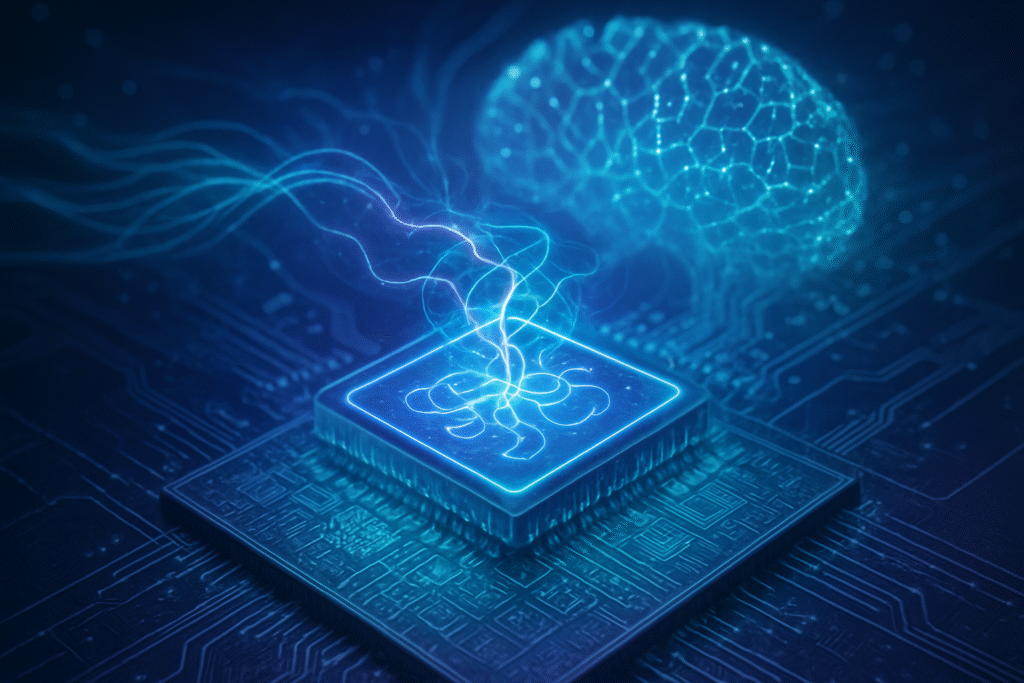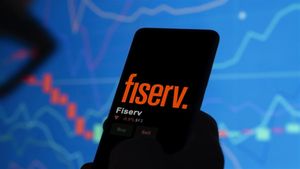
The convergence of quantum computing and semiconductor technology is poised to redefine the landscape of artificial intelligence, promising to unlock computational capabilities previously unimaginable. This groundbreaking intersection is not merely an incremental upgrade but a fundamental shift, laying the groundwork for a new generation of intelligent systems that can tackle the world's most complex problems. By bridging the gap between these two advanced fields, researchers and engineers are paving the way for a future where AI can operate with unprecedented speed, efficiency, and problem-solving prowess.
The immediate significance of this synergy lies in its potential to accelerate the development of practical quantum hardware, enabling hybrid quantum-classical systems, and revolutionizing AI's ability to process vast datasets and solve intricate optimization challenges. This integration is critical for moving quantum computing from theoretical promise to tangible reality, with profound implications for everything from drug discovery and material science to climate modeling and advanced manufacturing.
The Technical Crucible: Forging a New Computational Paradigm
The foundational pillars of this technological revolution are quantum computing and semiconductors, each bringing unique capabilities to the table. Quantum computing harnesses the enigmatic principles of quantum mechanics, utilizing qubits instead of classical bits. Unlike bits that are confined to a state of 0 or 1, qubits can exist in a superposition of both states simultaneously, allowing for exponential increases in computational power through quantum parallelism. Furthermore, entanglement—a phenomenon where qubits become interconnected and instantaneously influence each other—enables more complex computations and rapid information exchange. Quantum operations are performed via quantum gates arranged in quantum circuits, though challenges like decoherence (loss of quantum states) remain significant hurdles.
Semiconductors, conversely, are the unsung heroes of modern electronics, forming the bedrock of every digital device. Materials like silicon, germanium, and gallium arsenide possess a unique ability to control electrical conductivity. This control is achieved through doping, where impurities are introduced to create N-type (excess electrons) or P-type (excess "holes") semiconductors, precisely tailoring their electrical properties. The band structure of semiconductors, with a small energy gap between valence and conduction bands, allows for this controlled conductivity, making them indispensable for transistors, microchips, and all contemporary computing hardware.
The integration of these two advanced technologies is multi-faceted. Semiconductors are crucial for the physical realization of quantum computers, with many qubits being constructed from semiconductor materials like silicon or quantum dots. This allows quantum hardware to leverage well-established semiconductor fabrication techniques, such as CMOS technology, which is vital for scaling up qubit counts and improving performance. Moreover, semiconductors provide the sophisticated control circuitry, error correction mechanisms, and interfaces necessary for quantum processors to communicate with classical systems, enabling the development of practical hybrid quantum-classical architectures. These hybrid systems are currently the most viable path to harnessing quantum advantages for AI tasks, ensuring seamless data exchange and coordinated processing.
This synergy also creates a virtuous cycle: quantum algorithms can significantly enhance AI models used in the design and optimization of advanced semiconductor architectures, leading to the development of faster and more energy-efficient classical AI chips. Conversely, advancements in semiconductor technology, particularly in materials like silicon, are paving the way for quantum systems that can operate at higher temperatures, moving away from the ultra-cold environments typically required. This breakthrough is critical for the commercialization and broader adoption of quantum computing for various applications, including AI, and has generated considerable excitement within the AI research community and industry experts, who see it as a fundamental step towards achieving true artificial general intelligence. Initial reactions emphasize the potential for unprecedented computational speed and the ability to tackle problems currently deemed intractable, sparking a renewed focus on materials science and quantum engineering.
Impact on AI Companies, Tech Giants, and Startups: A New Competitive Frontier
The integration of quantum computing and semiconductors is poised to fundamentally reshape the competitive landscape for AI companies, tech giants, and startups, ushering in an era of "quantum-enhanced AI." Major players like IBM (a leader in quantum computing, aiming for 100,000 qubits by 2033), Alphabet (Google) (known for achieving "quantum supremacy" with Sycamore and aiming for a 1 million-qubit quantum computer by 2029), and Microsoft (offering Azure Quantum, a comprehensive platform with access to quantum hardware and development tools) are at the forefront of developing quantum hardware and software. These giants are strategically positioning themselves to offer quantum capabilities as a service, democratizing access to this transformative technology. Meanwhile, semiconductor powerhouses like Intel are actively developing silicon-based quantum computing, including their 12-qubit silicon spin chip, Tunnel Falls, demonstrating a direct bridge between traditional semiconductor fabrication and quantum hardware.
The competitive implications are profound. Companies that invest early and heavily in specialized materials, fabrication techniques, and scalable quantum chip architectures will gain a significant first-mover advantage. This includes both the development of the quantum hardware itself and the sophisticated software and algorithms required for quantum-enhanced AI. For instance, Nvidia is collaborating with firms like Orca (a British quantum computing firm) to pioneer hybrid systems that merge quantum and classical processing, aiming for enhanced machine learning output quality and reduced training times for large AI models. This strategic move highlights the shift towards integrated solutions that leverage the best of both worlds.
Potential disruption to existing products and services is inevitable. The convergence will necessitate the development of specialized semiconductor chips optimized for AI and machine learning applications that can interact with quantum processors. This could disrupt the traditional AI chip market, favoring companies that can integrate quantum principles into their hardware designs. Startups like Diraq, which designs and manufactures quantum computing and semiconductor processors based on silicon quantum dots and CMOS techniques, are directly challenging established norms by focusing on error-corrected quantum computers. Similarly, Conductor Quantum is using AI software to create qubits in semiconductor chips, aiming to build scalable quantum computers, indicating a new wave of innovation driven by this integration.
Market positioning and strategic advantages will hinge on several factors. Beyond hardware development, companies like SandboxAQ (an enterprise software company integrating AI and quantum technologies) are focusing on developing practical applications in life sciences, cybersecurity, and financial services, utilizing Large Quantitative Models (LQMs). This signifies a strategic pivot towards delivering tangible, industry-specific solutions powered by quantum-enhanced AI. Furthermore, the ability to attract and retain professionals with expertise spanning quantum computing, AI, and semiconductor knowledge will be a critical competitive differentiator. The high development costs and persistent technical hurdles associated with qubit stability and error rates mean that only well-resourced tech giants and highly focused, well-funded startups may be able to overcome these barriers, potentially leading to strategic alliances or market consolidation in the race to commercialize this groundbreaking technology.
Wider Significance: Reshaping the AI Horizon with Quantum Foundations
The integration of quantum computing and semiconductors for AI represents a pivotal shift with profound implications for technology, industries, and society at large. This convergence is set to unlock unprecedented computational power and efficiency, directly addressing the limitations of classical computing that are increasingly apparent as AI models grow in complexity and data intensity. This synergy is expected to enhance computational capabilities, leading to faster data processing, improved optimization algorithms, and superior pattern recognition, ultimately allowing for the training of more sophisticated AI models and the handling of massive datasets currently intractable for classical systems.
This development fits perfectly into the broader AI landscape and trends, particularly the insatiable demand for greater computational power and the growing imperative for energy efficiency and sustainability. As deep learning and large language models push classical hardware to its limits, quantum-semiconductor integration offers a vital pathway to overcome these bottlenecks, providing exponential speed-ups for certain tasks. Furthermore, with AI data centers becoming significant consumers of global electricity, quantum AI offers a promising solution. Research suggests quantum-based optimization frameworks could reduce energy consumption in AI data centers by as much as 12.5% and carbon emissions by 9.8%, as quantum AI models can achieve comparable performance with significantly fewer parameters than classical deep neural networks.
The potential impacts are transformative, extending far beyond pure computational gains. Quantum-enhanced AI (QAI) can revolutionize scientific discovery, accelerating breakthroughs in materials science, drug discovery (such as mRNA vaccines), and molecular design by accurately simulating quantum systems. This could lead to the creation of novel materials for more efficient chips or advancements in personalized medicine. In industries, QAI can optimize financial strategies, enhance healthcare diagnostics, streamline logistics, and fortify cybersecurity through quantum-safe cryptography. It promises to enable "autonomous enterprise intelligence," allowing businesses to make real-time decisions faster and solve previously impossible problems.
However, significant concerns and challenges remain. Technical limitations, such as noisy qubits, short coherence times, and difficulties in scaling up to fault-tolerant quantum computers, are substantial hurdles. The high costs associated with specialized infrastructure, like cryogenic cooling, and a critical shortage of talent in quantum computing and quantum AI also pose barriers to widespread adoption. Furthermore, while quantum computing offers solutions for cybersecurity, its advent also poses a threat to current data encryption technologies, necessitating a global race to develop and implement quantum-resistant algorithms. Ethical considerations regarding the use of advanced AI, potential biases in algorithms, and the need for robust regulatory frameworks are also paramount.
Comparing this to previous AI milestones, such as the deep learning revolution driven by GPUs, quantum-semiconductor integration represents a more fundamental paradigm shift. While classical AI pushed the boundaries of what could be done with binary bits, quantum AI introduces qubits, which can exist in multiple states simultaneously, enabling exponential speed-ups for complex problems. This is not merely an amplification of existing computational power but a redefinition of the very nature of computation available to AI. While deep learning's impact is already pervasive, quantum AI is still nascent, often operating with "Noisy Intermediate-Scale Quantum Devices" (NISQ). Yet, even with current limitations, some quantum machine learning algorithms have demonstrated superior speed, accuracy, and energy efficiency for specific tasks, hinting at a future where quantum advantage unlocks entirely new types of problems and solutions beyond the reach of classical AI.
Future Developments: A Horizon of Unprecedented Computational Power
The future at the intersection of quantum computing and semiconductors for AI is characterized by a rapid evolution, with both near-term and long-term developments promising to reshape the technological landscape. In the near term (1-5 years), significant advancements are expected in leveraging existing semiconductor capabilities and early-stage quantum phenomena. Compound semiconductors like indium phosphide (InP) are becoming critical for AI data centers, offering superior optical interconnects that enable data transfer rates from 1.6Tb/s to 3.2Tb/s and beyond, essential for scaling rapidly growing AI models. These materials are also integral to the rise of neuromorphic computing, where optical waveguides can replace metallic interconnects for faster, more efficient neural networks. Crucially, AI itself is being applied to accelerate quantum and semiconductor design, with quantum machine learning modeling semiconductor properties more accurately and generative AI tools automating complex chip design processes. Progress in silicon-based quantum computing is also paramount, with companies like Diraq demonstrating high fidelity in two-qubit operations even in mass-produced silicon chips. Furthermore, the immediate threat of quantum computers breaking current encryption methods is driving a near-term push to embed post-quantum cryptography (PQC) into semiconductors to safeguard AI operations and sensitive data.
Looking further ahead (beyond 5 years), the vision includes truly transformative impacts. The long-term goal is the development of "quantum-enhanced AI chips" and novel architectures that could redefine computing, leveraging quantum principles to deliver exponential speed-ups for specific AI workloads. This will necessitate the creation of large-scale, error-corrected quantum computers, with ambitious roadmaps like Google Quantum AI's aim for a million physical qubits with extremely low logical qubit error rates. Experts predict that these advancements, combined with the commercialization of quantum computing and the widespread deployment of edge AI, will contribute to a trillion-dollar semiconductor market by 2030, with the quantum computing market alone anticipated to reach nearly $7 billion by 2032. Innovation in new materials and architectures, including the convergence of x86 and ARM with specialized GPUs, the rise of open-source RISC-V processors, and the exploration of neuromorphic computing, will continue to push beyond conventional silicon.
The potential applications and use cases are vast and varied. Beyond optimizing semiconductor manufacturing through advanced lithography simulations and yield optimization, quantum-enhanced AI will deliver breakthrough performance gains and reduce energy consumption for AI workloads, enhancing AI's efficiency and transforming model design. This includes improving inference speeds and reducing power consumption in AI models through quantum dot integration into photonic processors. Other critical applications include revolutionary advancements in drug discovery and materials science by simulating molecular interactions, enhanced financial modeling and optimization, robust cybersecurity solutions, and sophisticated capabilities for robotics and autonomous systems. Quantum dots, for example, are set to revolutionize image sensors for consumer electronics and machine vision.
However, significant challenges must be addressed for these predictions to materialize. Noisy hardware and qubit limitations, including high error rates and short coherence times, remain major hurdles. Achieving fault-tolerant quantum computing requires vastly improved error correction and scaling to millions of qubits. Data handling and encoding — efficiently translating high-dimensional data into quantum states — is a non-trivial task. Manufacturing and scalability also present considerable difficulties, as achieving precision and consistency in quantum chip fabrication at scale is complex. Seamless integration of quantum and classical computing, along with overcoming economic viability concerns and a critical talent shortage, are also paramount. Geopolitical tensions and the push for "sovereign AI" further complicate the landscape, necessitating updated, harmonized international regulations and ethical considerations.
Experts foresee a future where quantum, AI, and classical computing form a "trinity of compute," deeply intertwined and mutually beneficial. Quantum computing is predicted to emerge as a crucial tool for enhancing AI's efficiency and transforming model design as early as 2025, with some experts even suggesting a "ChatGPT moment" for quantum computing could be within reach. Advancements in error mitigation and correction in the near term will lead to a substantial increase in computational qubits. Long-term, the focus will be on achieving fault tolerance and exploring novel approaches like diamond technology for room-temperature quantum computing, which could enable smaller, portable quantum devices for data centers and edge applications, eliminating the need for complex cryogenic systems. The semiconductor market's growth, driven by "insatiable demand" for AI, underscores the critical importance of this intersection, though global collaboration will be essential to navigate the complexities and uncertainties of the quantum supply chain.
Comprehensive Wrap-up: A New Dawn for AI
The intersection of quantum computing and semiconductor technology is not merely an evolutionary step but a revolutionary leap, poised to fundamentally reshape the landscape of Artificial Intelligence. This symbiotic relationship leverages the unique capabilities of quantum mechanics to enhance semiconductor design, manufacturing, and, crucially, the very execution of AI algorithms. Semiconductors, the bedrock of modern electronics, are now becoming the vital enablers for building scalable, efficient, and practical quantum hardware, particularly through silicon-based qubits compatible with existing CMOS manufacturing processes. Conversely, quantum-enhanced AI offers novel solutions to accelerate design cycles, refine manufacturing processes, and enable the discovery of new materials for the semiconductor industry, creating a virtuous cycle of innovation.
Key takeaways from this intricate convergence underscore its profound implications. Quantum computing offers the potential to solve problems that are currently intractable for classical AI, accelerating machine learning algorithms and optimizing complex systems. The development of hybrid quantum-classical architectures is crucial for near-term progress, allowing quantum processors to handle computationally intensive tasks while classical systems manage control and error correction. Significantly, quantum machine learning (QML) has already demonstrated a tangible advantage in specific, complex tasks, such as modeling semiconductor properties for chip design, outperforming traditional classical methods. This synergy promises a computational leap for AI, moving beyond the limitations of classical computing.
This development marks a profound juncture in AI history. It directly addresses the computational and scalability bottlenecks that classical computers face with increasingly complex AI and machine learning tasks. Rather than merely extending Moore's Law, quantum-enhanced AI could "revitalize Moore's Law or guide its evolution into new paradigms" by enabling breakthroughs in design, fabrication, and materials science. It is not just an incremental improvement but a foundational shift that will enable AI to tackle problems previously considered impossible, fundamentally expanding its scope and capabilities across diverse domains.
The long-term impact is expected to be transformative and far-reaching. Within 5-10 years, quantum-accelerated AI is projected to become a routine part of front-end chip design, back-end layout, and process control in the semiconductor industry. This will lead to radical innovation in materials and devices, potentially discovering entirely new transistor architectures and post-CMOS paradigms. The convergence will also drive global competitive shifts, with nations and corporations effectively leveraging quantum technology gaining significant advantages in high-performance computing, AI, and advanced chip production. Societally, this will lead to smarter, more interconnected systems, enhancing productivity and innovation in critical sectors while also addressing the immense energy consumption of AI through more efficient chip design and cooling technologies. Furthermore, the development of post-quantum semiconductors and cryptography will be essential to ensure robust security in the quantum era.
In the coming weeks and months, several key areas warrant close attention. Watch for commercial launches and wider availability of quantum AI accelerators, as well as advancements in hybrid system integrations, particularly those demonstrating rapid communication speeds between GPUs and silicon quantum processors. Continued progress in automating qubit tuning using machine learning will be crucial for scaling quantum computers. Keep an eye on breakthroughs in silicon quantum chip fidelity and scalability, which are critical for achieving utility-scale quantum computing. New research and applications of quantum machine learning that demonstrate clear advantages over classical methods, especially in niche, complex problems, will be important indicators of progress. Finally, observe governmental and industrial investments, such as national quantum missions, and developments in post-quantum cryptography integration into semiconductor solutions, as these signal the strategic importance and rapid evolution of this field. The intersection of quantum computing and semiconductors for AI is not merely an academic pursuit but a rapidly accelerating field with tangible progress already being made, promising to unlock unprecedented computational power and intelligence in the years to come.
This content is intended for informational purposes only and represents analysis of current AI developments.
TokenRing AI delivers enterprise-grade solutions for multi-agent AI workflow orchestration, AI-powered development tools, and seamless remote collaboration platforms.
For more information, visit https://www.tokenring.ai/.







